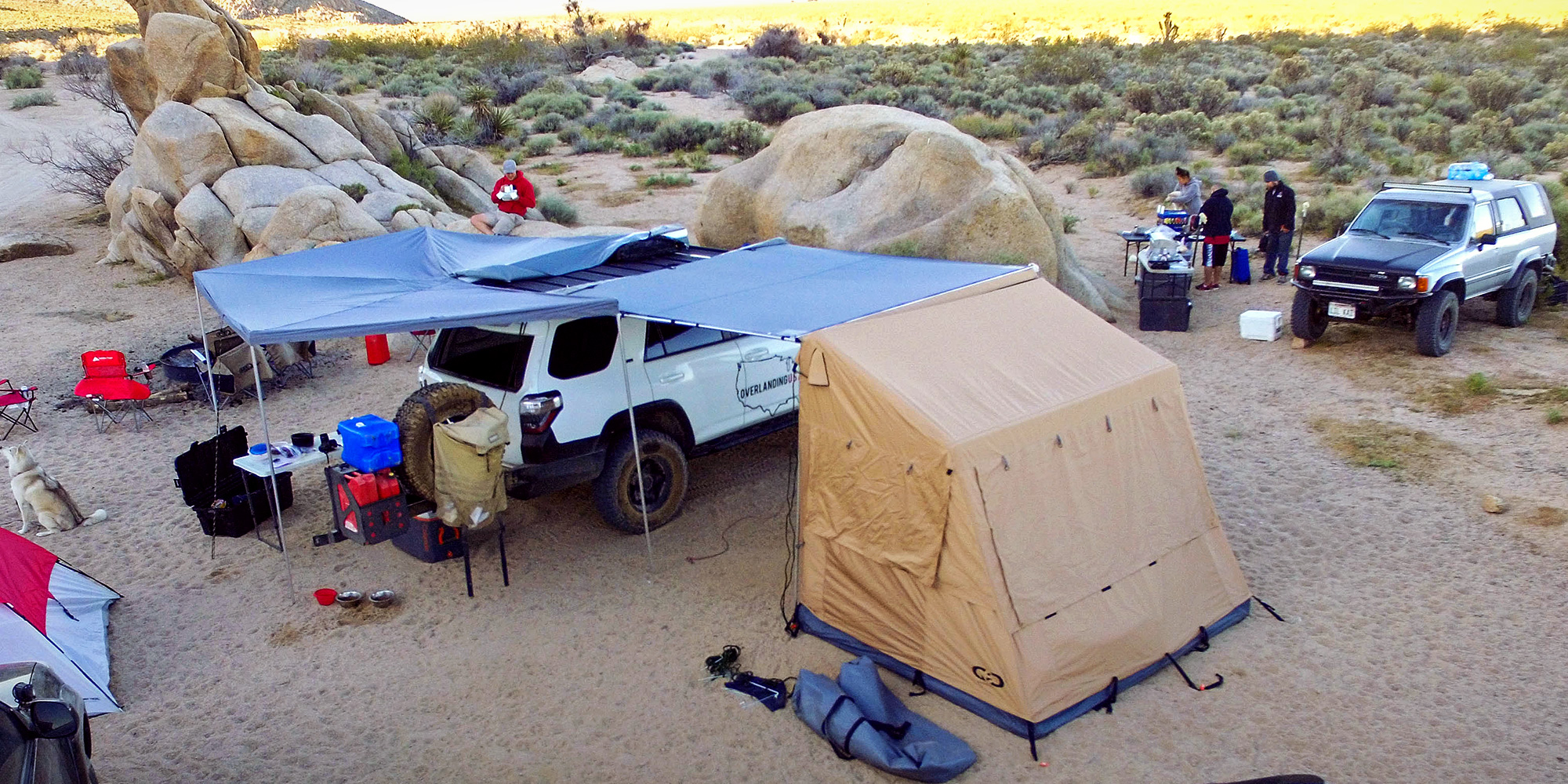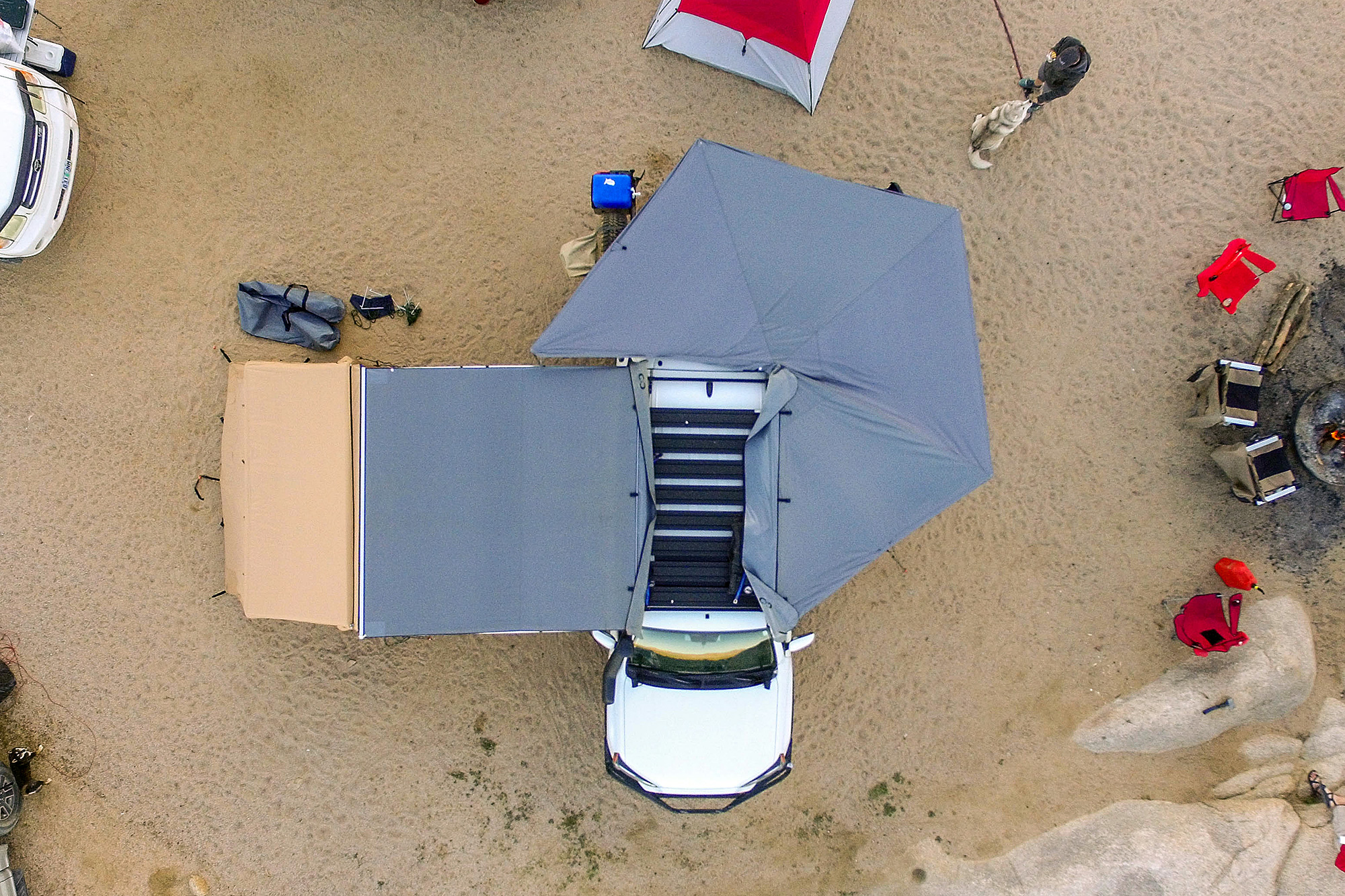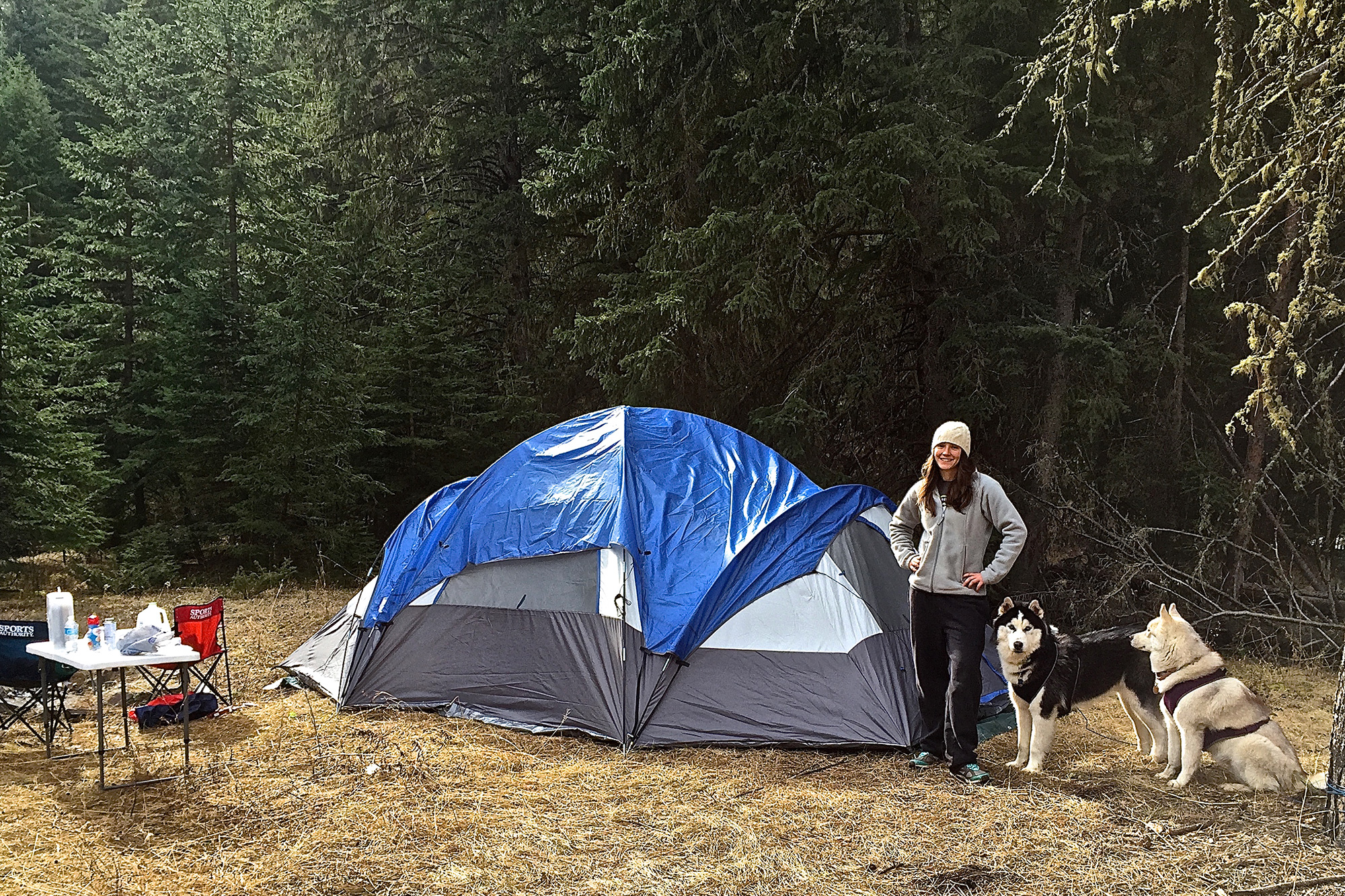With the Roof Top Tent craze hitting an all time high, we made the conscious decision to leave our roof and firmly plant our feet back on solid ground. “Why would you do such a thing, don’t you know all true overlander’s use Roof Top Tents?”
Let me explain: while Roof Top Tents (or RTT as we will refer to it from now on) are great in concept, they sometimes don’t live up to their high held glory.
Let me explain further: yes it is true RTT’s get you off the ground, away from animals, the dirt, and unleveled ground. But you also get: poor MPG on your adventure rig, top heaviness, limited space, the inability to stand up in your tent, and most of all the ability to leave camp without breaking down your sleeping accommodations.
Now, taking all of these into consideration, we decided to give the humble ground tent a try. What we found was a much more fulfilling camp experience. Currently we are running a double awning system: one 270-degree Manta awing, one standard 8-foot awning, and our all important awning tent. This setup gives us maximum coverage while still giving us a quick and simple set up and break down.
This kept our already top heavy 4Runner from being even more top heavy. Oh, and we regained 3 MPG the RTT had taken away, adding almost 60 miles to our total vehicle range per tank of gas.
At the end of the day one of the biggest advantages is for our dogs. We are like many overlanders and outdoors individuals—we love taking our dogs with us on trips, and they love to go! The old routine would be the same every night: I would throw the dogs over my shoulder and carry them up the ladder, only to have them take up most of the room in the cramped tent. And don’t get me started on if they have to pee in the middle of the night. With our new set up, not only do they not have to be carried over the shoulder, but, they have their own beds in the tent. Why? Because we now have so much more room!
At the end of the day, you will always have those that say the RTT is the best way to go. But for us and so many others remember: there is always another option, you just have to step back and look at them all.









